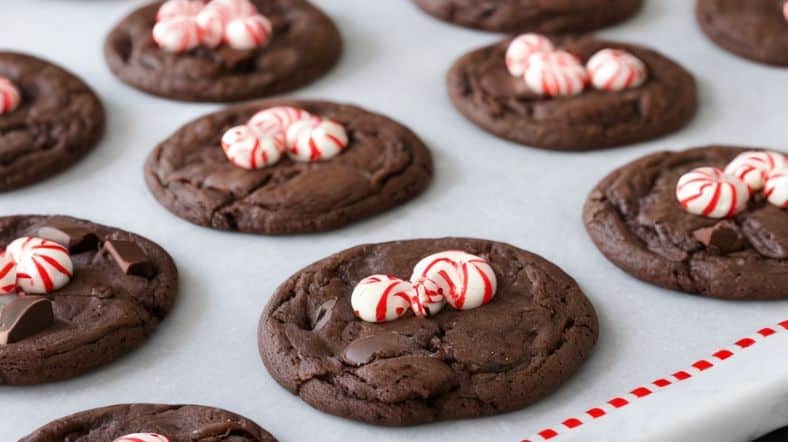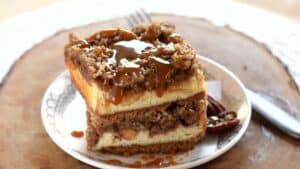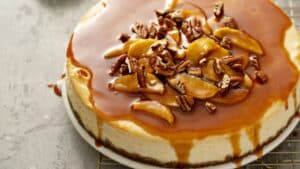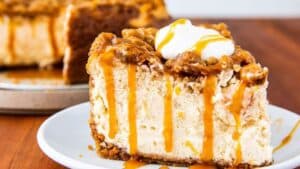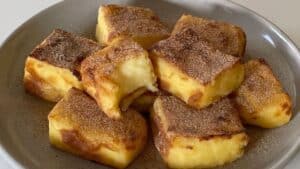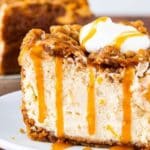If you think you know cookies, think again. Double chocolate peppermint cookies aren’t just another sweet treat they’re a symphony of rich cocoa and crisp mint that can elevate your baking game beyond the usual. This article dives deep into the art and science of creating the perfect double chocolate peppermint cookie, with insights tailored for pros who wanna push boundaries in flavor, texture, and presentation.
Let’s be honest, the market is flooded with cookie recipes, but how many offer that magical balance of fudgy chocolate depth and that bright peppermint zing? Not many, and that’s why this combo stands out. We’ll explore everything from ingredient nuances to advanced baking techniques and sprinkle in expert tips that make a huge difference.
Why Double Chocolate Peppermint?
Chocolate and peppermint is a classic duo, but pairing them in cookie form is trickier than you might think. Chocolate demands richness and moisture, while peppermint can easily overpower if you’re not careful. For professionals, this means careful calibration of ingredients and technique.
Peppermint’s volatile oils can clash or mellow out depending on how and when they’re added. The goal here is not just to add peppermint flavor, but to create a harmonious taste profile where both chocolate and peppermint sing in perfect pitch.
Ingredients: What Matters Most
Chocolate: Beyond Just “Good Chocolate”
The type of chocolate you pick can make or break your cookies. For these double chocolate peppermint beauties, using high-quality Dutch-processed cocoa powder is crucial. It offers a deeper, less acidic flavor than natural cocoa powder, which is more acidic and can disrupt the leavening process if not adjusted properly.
In addition to cocoa powder, using semi-sweet or bittersweet chocolate chunks is recommended. Chocolate chips often contain stabilizers that affect melting and texture. Chunks melt unevenly, giving a delightful, gooey texture with little pockets of molten chocolate.
Peppermint: Freshness Is Key
Peppermint extract varies wildly in quality. Synthetic extracts can taste harsh or medicinal. For professional bakers, investing in pure peppermint oil or high-quality natural peppermint extract is well worth it.
Be cautious about quantity: start with less and adjust. Too much peppermint oil can be overpowering and linger unpleasantly on the palate.
Flour and Fat
Opt for bleached all-purpose flour or experiment with cake flour for a softer crumb. Butter is non-negotiable here. Its fat content not only enhances flavor but helps chocolate meld beautifully with the dough. Use unsalted, European-style butter with higher fat content (82%+) for that creamy, rich texture.
Sweeteners and Other Add-Ins
Granulated sugar helps with structure and crisp edges, while brown sugar adds moisture and chewiness thanks to its molasses content. A mix of both is ideal.
Adding a pinch of salt is essential—it sharpens the chocolate and balances sweetness. Some pros swear by adding a tiny bit of espresso powder, which intensifies the chocolate without adding a coffee taste.
The Science of Mixing and Baking
Creaming Butter and Sugar: The Foundation
Properly creaming your butter and sugars traps air and builds a light, tender cookie. Don’t rush this step—it can take 3 to 5 minutes at medium speed to achieve the right fluffiness.
Over-creaming can cause excessive spread in the oven, so finding that sweet spot is key.
Incorporating Peppermint
Add peppermint extract after creaming and before the flour goes in. This ensures even distribution. Adding peppermint too early, especially before creaming, can cause volatile oils to evaporate, weakening the flavor.
Flour and Cocoa: Sifting Matters
Sifting your dry ingredients together—flour, cocoa powder, baking soda or powder—is a must. It prevents lumps and distributes leavening agents uniformly. The latter impacts the cookie rise and texture profoundly.
Temperature and Dough Rest
Here’s where many overlook a big pro tip: chill your dough for at least 2 hours, ideally overnight. Resting allows the flour to hydrate fully, reducing spread and enhancing flavor development.
Cold dough also firms up the butter, so cookies bake up thicker and chewier.
Baking Time and Temperature
Bake at 350°F (177°C) for 9-12 minutes. The edges should look set, but centers may seem slightly underbaked—that’s perfect for fudgy interiors. For extra chew, reduce the temperature to 325°F and bake a minute or two longer.
The Peppermint Crunch
For a festive crunch and added texture, sprinkle crushed peppermint candy on top before baking. Use fine, crushed candy cane pieces so they don’t overwhelm the bite but add that crisp contrast.
Texture and Flavor: Striking the Balance
Texture in cookies is a mix of science and art. For the perfect double chocolate peppermint cookie:
- Crispy edges that slightly snap.
- Chewy, fudgy center that melts in the mouth.
- Balanced sweetness that doesn’t drown out chocolate or mint.
- Subtle peppermint aroma without medicinal notes.
Many professionals experiment by tweaking sugar ratios or butter temperature to get just right.
Common Misconceptions & Troubleshooting
Misconception 1: Using too much peppermint makes cookies taste better.
Reality? Overdoing peppermint causes bitterness and masks chocolate.
Misconception 2: Chocolate chips and cocoa powder are interchangeable.
Wrong. Chips add texture and melty bites; cocoa powder adds deep flavor and color.
Troubleshooting spread: If cookies spread too much, chill dough longer or reduce butter slightly.
Dry cookies? Increase brown sugar for moisture or shorten baking time.
Emerging Trends in Double Chocolate Peppermint Cookies
The cookie scene keeps evolving. Some pros add sea salt flakes post-bake for flavor contrast. Others experiment with vegan butters and plant-based peppermint extracts for dietary-friendly versions, although balancing texture can be tricky.
Using alternative sweeteners like coconut sugar or maple syrup is rising, but be mindful they affect texture and spread.
Real-World Applications: From Bakery to Home Kitchen
Many boutique bakeries use double chocolate peppermint cookies as a holiday bestseller. They package them in gift tins, combining indulgence with the festive vibe. Mastering this cookie opens doors to seasonal menu additions, catering events, and even upscale cookie subscription boxes.
Home bakers looking to impress can leverage the chill time to plan ahead for parties or gifts.
Expert Recommendations
- Always taste your peppermint extract before adding; it can vary a lot in potency.
- Test different chocolates—try a blend of bittersweet and milk chocolate chunks.
- Use an oven thermometer. Even slight temperature fluctuations impact cookie texture massively.
- Document your tweaks! Small changes in flour brands or humidity can shift results.
- Embrace dough chilling. It’s the secret weapon for texture and flavor depth.
Wrapping It Up
Double chocolate peppermint cookies aren’t just sweet treats; they’re an exercise in balance, texture mastery, and flavor precision. For pros aiming to up their cookie game, focusing on ingredient quality, dough handling, and baking technique is non-negotiable.
Experiment, take notes, and trust your palate. When you get it right, these cookies deliver that perfect chewy, chocolaty, minty bite that keeps folks coming back.
If you take away one thing, let it be this: don’t skimp on the chill time and choose your peppermint with care. These simple steps set your double chocolate peppermint cookies apart from the cookie crowd.
Happy baking!
